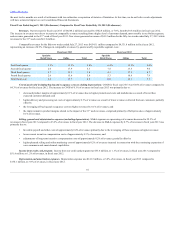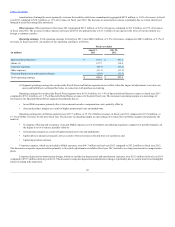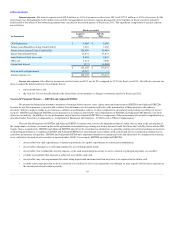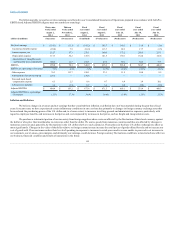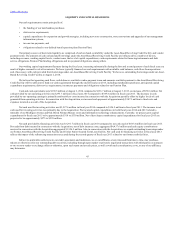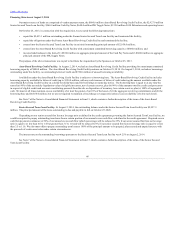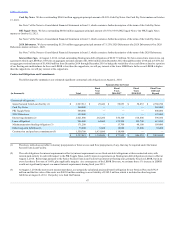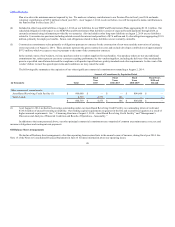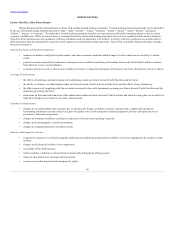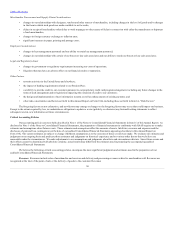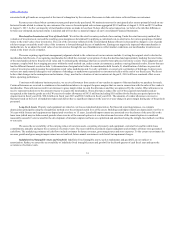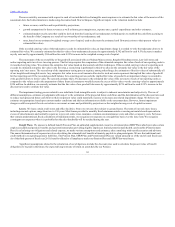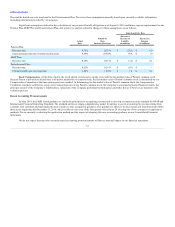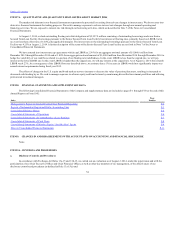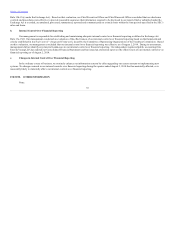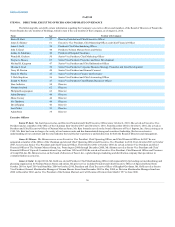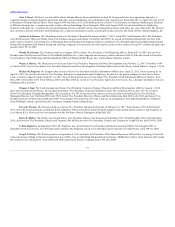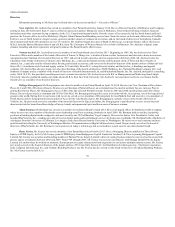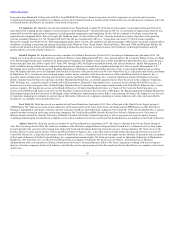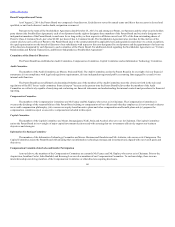Neiman Marcus 2013 Annual Report Download - page 53
Download and view the complete annual report
Please find page 53 of the 2013 Neiman Marcus annual report below. You can navigate through the pages in the report by either clicking on the pages listed below, or by using the keyword search tool below to find specific information within the annual report.
Table of Contents
associated with gift cards are recognized at the time of redemption by the customer. Revenues exclude sales taxes collected from our customers.
Revenues are reduced when customers return goods previously purchased. We maintain reserves for anticipated sales returns primarily based on our
historical trends related to returns by our customers. Our reserves for anticipated sales returns aggregated $38.9 million at August 2, 2014 and $37.4 million
at August 3, 2013. As the vast majority of merchandise returns are made in less than 30 days after the sales transaction, we believe the risk that differences
between our estimated and actual returns is minimal and will not have a material impact on our Consolidated Financial Statements.
Merchandise Inventories and Cost of Goods Sold. We utilize the retail inventory method of accounting. Under the retail inventory method, the
valuation of inventories at cost and the resulting gross margins are determined by applying a calculated cost-to-retail ratio, for various groupings of similar
items, to the retail value of our inventories. The cost of the inventory reflected on the Consolidated Balance Sheets is decreased by charges to cost of goods
sold at average cost and the retail value of the inventory is lowered through the use of markdowns. Earnings are negatively impacted when merchandise is
marked down. As we adjust the retail value of our inventories through the use of markdowns to reflect market conditions, our merchandise inventories are
stated at the lower of cost or market.
The areas requiring significant management judgment related to the valuation of our inventories include 1) setting the original retail value for the
merchandise held for sale, 2) recognizing merchandise for which the customer’s perception of value has declined and appropriately marking the retail value
of the merchandise down to the perceived value and 3) estimating the shrinkage that has occurred between physical inventory counts. These judgments and
estimates, coupled with the averaging processes within the retail method can, under certain circumstances, produce varying financial results. Factors that can
lead to different financial results include 1) determination of original retail values for merchandise held for sale, 2) identification of declines in perceived
value of inventories and processing the appropriate retail value markdowns and 3) overly optimistic or conservative estimation of shrinkage. In prior years,
we have not made material changes to our estimates of shrinkage or markdown requirements on inventories held as of the end of our fiscal years. We do not
believe that changes in the assumptions and estimates, if any, used in the valuation of our inventories at August 2, 2014 will have a material effect on our
future operating performance.
Consistent with industry business practice, we receive allowances from certain of our vendors in support of the merchandise we purchase for resale.
Certain allowances are received to reimburse us for markdowns taken or to support the gross margins that we earn in connection with the sales of the vendor’s
merchandise. These allowances result in an increase to gross margin when we earn the allowances and they are approved by the vendor. Other allowances we
receive represent reductions to the amounts we pay to acquire the merchandise. These allowances reduce the cost of the acquired merchandise and are
recognized at the time the goods are sold. We received vendor allowances of $93.5 million (including $5.0 million for the Predecessor period prior to the
Acquisition) in fiscal year 2014, $90.2 million in fiscal year 2013 and $92.5 million in fiscal year 2012. The amounts of vendor allowances we receive
fluctuate based on the level of markdowns taken and did not have a significant impact on the year-over-year change in gross margin during any of the periods
presented.
Long-lived Assets. Property and equipment are stated at cost less accumulated depreciation. For financial reporting purposes, we compute
depreciation principally using the straight-line method over the estimated useful lives of the assets. Buildings and improvements are depreciated over five to
30 years while fixtures and equipment are depreciated over three to 15 years. Leasehold improvements are amortized over the shorter of the asset life or the
lease term (which may include renewal periods when exercise of the renewal option is at our discretion and exercise of the renewal option is considered
reasonably assured). Costs incurred for the development of internal computer software are capitalized and amortized using the straight-line method over three
to ten years.
We assess the recoverability of the carrying values of our store assets, consisting of property and equipment, customer lists and favorable lease
commitments, annually and upon the occurrence of certain events. The recoverability assessment requires judgment and estimates of future store generated
cash flows. The underlying estimates of cash flows include estimates for future revenues, gross margin rates and store expenses. To the extent our estimates for
revenue growth and gross margin improvement are not realized, future annual assessments could result in impairment charges.
Indefinite-lived Intangible Assets and Goodwill. Indefinite-lived intangible assets, such as tradenames and goodwill, are not subject to
amortization. Rather, we assess the recoverability of indefinite-lived intangible assets and goodwill in the fourth quarter of each fiscal year and upon the
occurrence of certain events.
51


